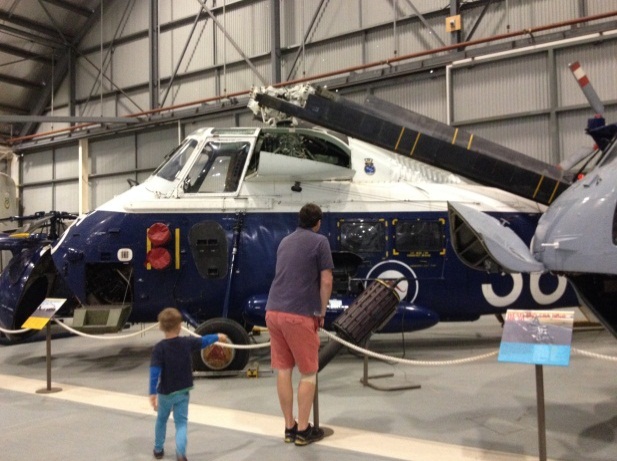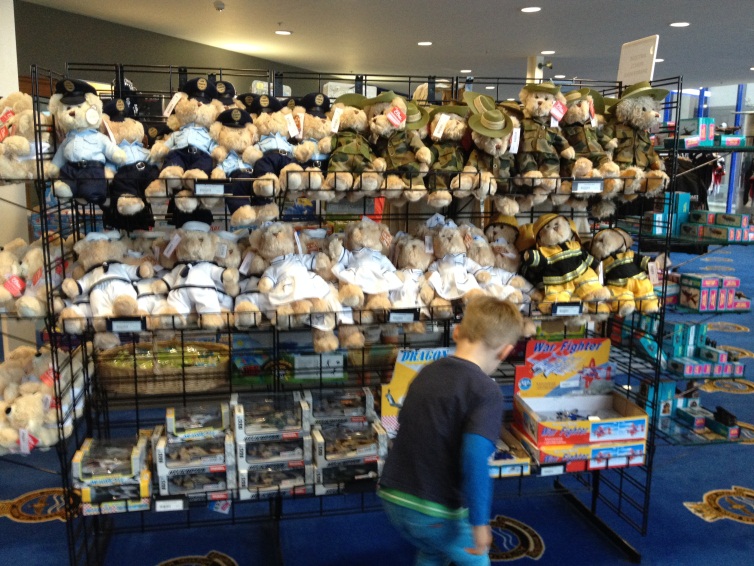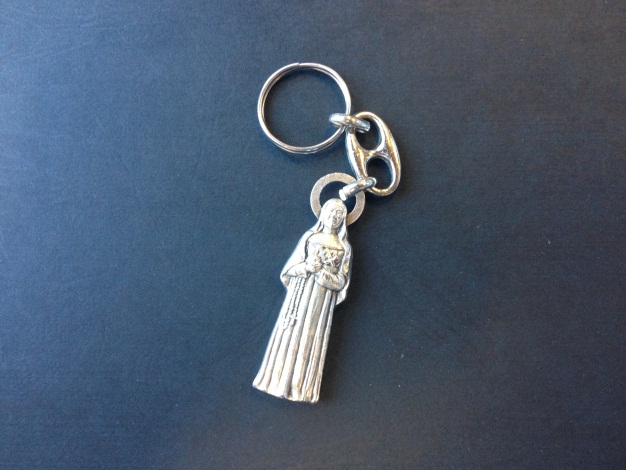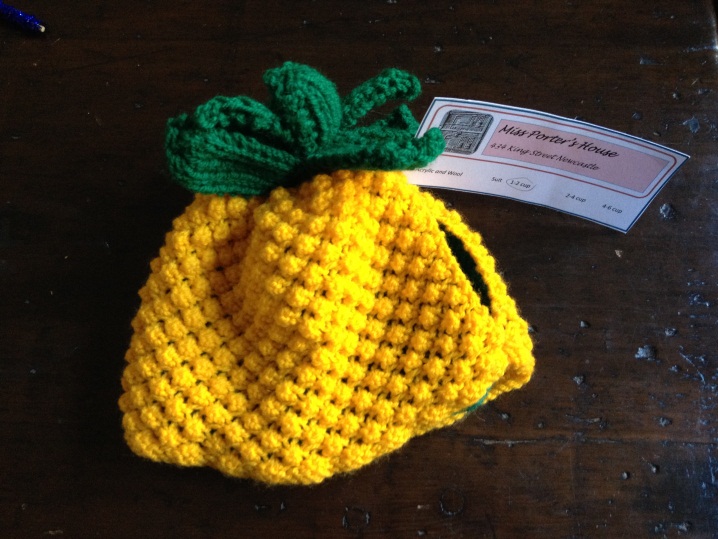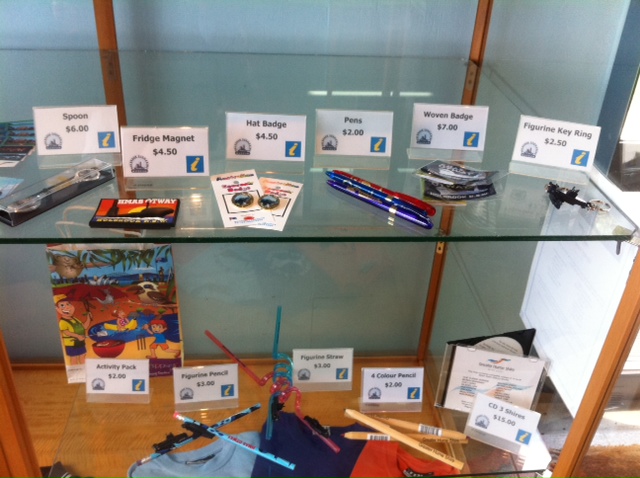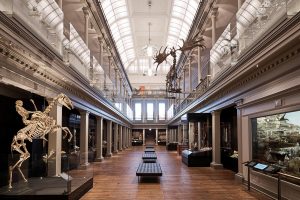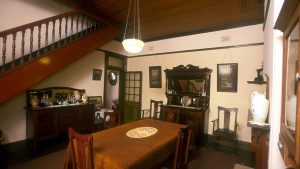Museum shops around the world are booming. It seems none of us can resist the power of the full-colour catalogue, the themed coffee mug or museum-branded soft toy.
In exploring museums and galleries, visitors are often moved by what’s on display–images, objects and stories that evoke and inspire–and falling victim to Pavlov; mouths watering, wallets opening we are keen to take home a piece of the memory.
Over the last ten years several trends have evolved in museum merchandising some of which may be of interest to small, volunteer run and regional organisations. It’s possible to generate significant funds through selling visitors’ experiences to them again in the form of a teatowel, fridge magnet or local crafts.
Themed shops
In addition to branded merchandise there’s been a rise in temporary shops and ‘pop-ups’ which carry exclusively themed, exhibition-related merchandise. Usually on display for the duration of the exhibition, these shops focus on facsimiles of popular images transferred onto utilitarian articles; everything from cups to t-shirts, pencils to umbrellas. Charities also use this model of merchandising; think Bandaged Bear or Daffodil Day style promotions. Merchandise comes in both high-quality and cheaper souvenirs with the short availability time frame creating significant purchasing momentum.
This model of merchandising can be applied to the small museum. When new exhibits open, especially temporary and travelling ones, try to provide souvenirs or products themed to the exhibit. Care must be taken in the copyright of images used – ensure you are the copyright owner or the item is free from copyright restrictions before embarking on product purchasing.
A variety of small and economical souvenirs can sourced online, simply provide artwork or design and allow up to 6 weeks before goods are received.
Quality products and authenticity
Providing a selection of merchandise is important in capturing the largest audience. Children may want to buy a small key ring or souvenir but others will want something more significant, unique and long lasting.
Talking to local designers and craftspeople to develop and supply local crafts themed to your museum or gallery may provide a working solution to this.
Museum shops play a critical role in promoting the integrity and education experience of their associated exhibitions. Made in Indonesia boomerangs and teatowels, key rings and umbrellas designed and made in China bearing misappropriated Aboriginal motifs have no place in cultural institutions.
In thinking about Aboriginal products and crafts it is essential to ensure these are authentic and where possible carry the Indigenous Art Code. It’s a code of conduct for those buying, selling and making Indigenous products by providing standards and processes for dealing with Indigenous visual artists; provides a framework for ethical behaviour; and builds consumer confidence that the artworks they buy are authentic and ethically produced.
Buying groups
One commonly heard gripe about museum shops is that their products are overpriced. This is the result of the small buying power of regional, volunteer run museums. An inability to carry large stock numbers means small museums can’t access the best wholesale prices available to large buyers.
Sydney Living Museums (SLM) operates four substantial shops: the Museum of Sydney, Hyde Park Barracks, Susannah Place and Vaucluse House and supplies themed merchandise for sale at several of its other properties. Not all products sold at the Justice and Police Museum are available at the Susannah Place shop, the related product manufacturers and suppliers recognise and reward the buying power of SLM as one organisation.
Small and regional museums and galleries can join forces to leverage some buying power on wholesalers which will reduce costs, increase margins while allowing some diversification in products.
So there’s rich pickings to be had if merchandising is carefully planned. One small museum M&G spoke to reports that their merchandise sales account for around 28% of revenue. They use a margin of between 30-50% on most items which features souvenirs including t-shirts, hats, beanies, stickers, postcards, pencils, keyrings, magnets, pens, and woven badges.
So get to it and sell, sell, sell!
There’s rich pickings to be had if merchandising is carefully planned. One small museum M&G spoke to reports that their merchandise sales account for around 28% of revenue.
Here’s a few examples of museum shops in NSW.
Mary MacKillop Place Museum
The Mary MacKillop Gift Shop and Café is a popular destination independent of the museum itself.
As well as visitors to the museum, pilgrims to the Chapel and general public living and working in surrounding North Sydney all patronise the shop daily.
Coffee, religious medals and prayers cards are the biggest sellers. Shoppers can purchase books, Mary MacKillop emblazoned carry bags, candles, umbrellas or placemats and wine glasses bearing Mary’s signature. Items are also available online through the Mary MacKillop Place website.
Whilst the product creates a necessary revenue source to the museum, greater than admissions, the visitor experience is enriched through the souvenirs on sale. Some visitors will purchase rosary beads and place them on Mary’s tomb to take home to loved ones and the sick. The emotions experienced during the visit are perpetuated long after with the assistance of tangible objects purchased in the museum shop.
Tyrannosaurs Australian Museum
The trend at the Australian Museum is not just to have one museum shop, but a temporary museum store attached to the exit of their blockbuster feature exhibition. As is the case with Tyrannosaurs: Meet the Family. The visitor is funneled directly into shelves of every product imaginable bearing a dinosaur. There is something for everyone – from big ticket toys over $100 to pencils and bookmarks under $5 – with the combination of pester power and the quality of the merchandise almost always guaranteeing a sale.
The Australian Museum has a broad collection and this is reflected in the merchandise it carries in its shops. The temporary shop attached to the big exhibitions allows the Museum an opportunity to capture the large number of visitors expressly visiting this show with customised merchandise.
Miss Porters House
For museums that don’t charge an admission price, the gift shop or merchandise is a valuable source of income.
Volunteers at Miss Porters House in Newcastle use their craft skills to create merchandise in theme with the domestic nature of their museum. Hand-knitted tea cosies and quality tea towels displayed on entry are irresistible to the visitor and offer an affordable memento for gifts or use on returning home, again evoking memories of the museum visit and the treasures discovered there.
Want to know more?
View the video on Cultural Merchandising


